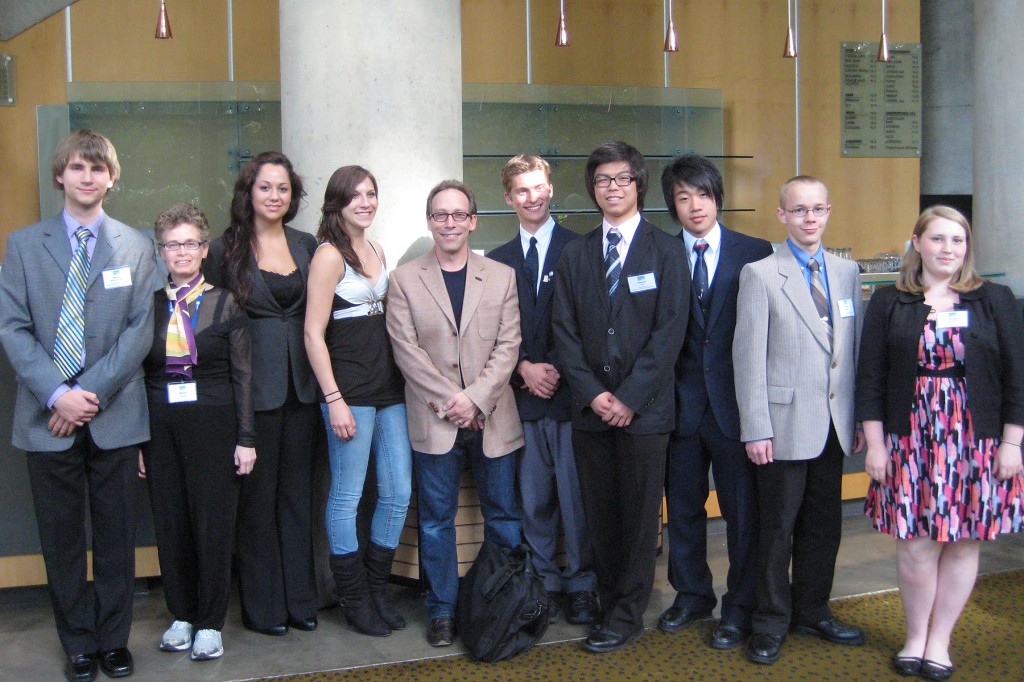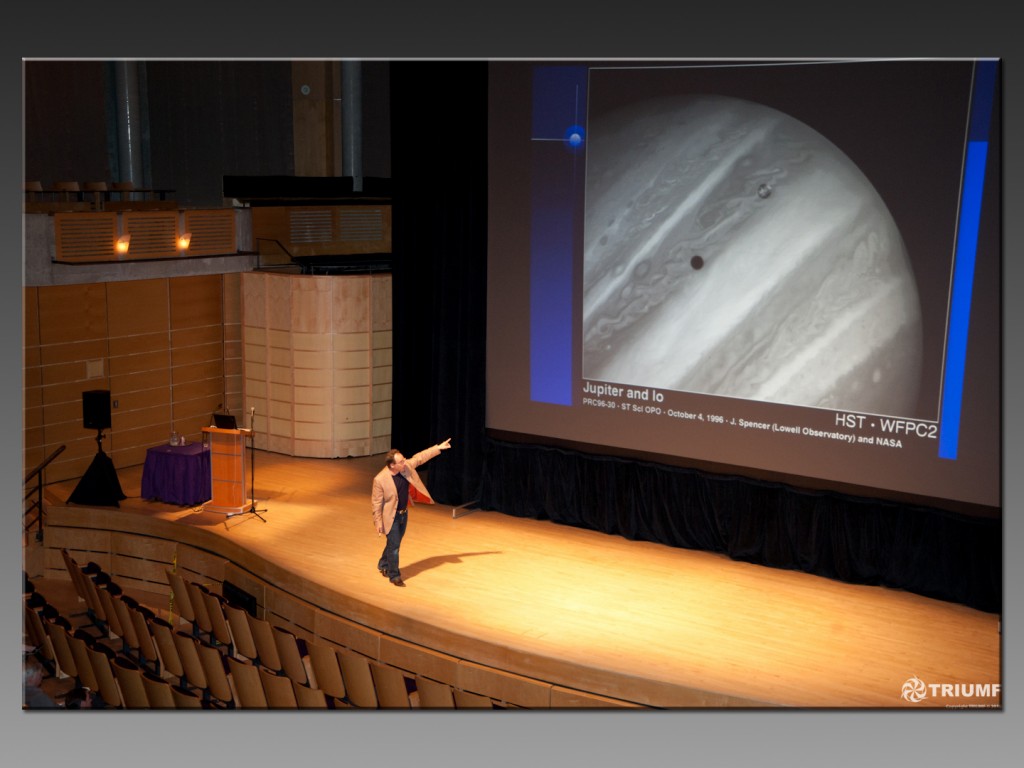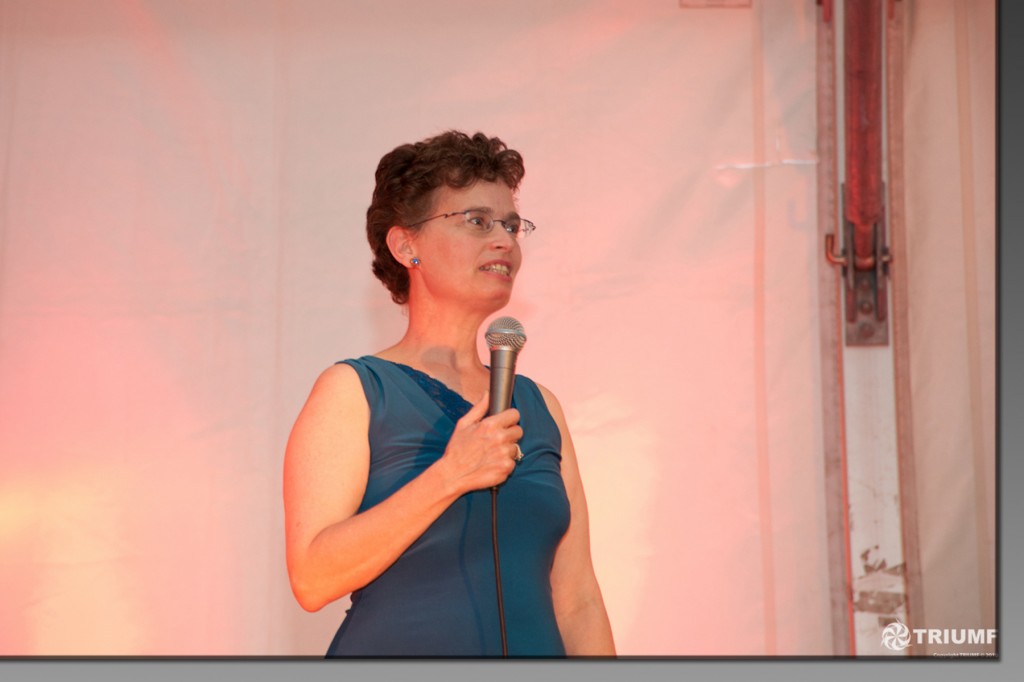Vancouver. Sometimes things start because of my family name. This week I had the pleasure of being a special guest at the International Nuclear Physics Conference (INPC) hosted by TRIUMF at UBC. The conference is major, bringing together nuclear physicists of all specialties from this ever-expanding field, from all over the globe. The atmosphere throughout was charged with the thrill of great minds meeting.
INPC opened last Sunday with a reception at the Chan Centre. I spent much of my time talking with the British Columbia high school science fair students who had won the prize spots in the circular lobby surrounding the theatre. Brought together by the BC Innovation Council, projects ranged from the galactic, with Mathias Hudoba de Badyn’s presentation of a new integration of time, gravity and the Big Bang, to Michael Peters’ delightfully practical, fully functioning prototype wheelchair that gently and automatically exercises the user’s lower limbs as the chair moves forward.
Lawrence M. Krauss, theoretical physicist and author of The Physics of Star Trek, gave the keynote address, fittingly about the history of the universe. Rodin’s sculptures illustrate the concept of form emerging from formlessness, he pointed out and then quipped, “In the beginning there were no Atoms — and no Eve’s.”
The lecture put us in proper perspective. We’re all made of molecules forged in stars forming, exploding and bombarding Earth. Earth also originally formed from the formless and so! Guess where we’re headed!?
Professor Krauss and I enjoyed a brief exchange after his talk. Once the formalities were over, he gave his attention to the high school science fair winners.

M. Hudoba de Badyn, O. Fermi, J. Traude, K. Kilba, L. Krauss, M. Peters, D. Lee, O. Lu, O. Jourmel, H. Bild-Enkin. Photo: Mathias Hudoba de Badyn. Not pictured: L. Stothers
During the week of the conference, I confess, I did not attend the lectures, and this in spite of celestial titles, like: “Neutron Rich Matter and Neutron Stars and Their Crusts” or the more pragmatic-sounding: “The Roles of Deformation and Orientation in Heavy-Ion Collisions Induced by Light Deformed Nuclei at Intermediate Energy“. I did visit the graduate and faculty poster sessions and enjoyed talking with the presenters although the titles were no easier to comprehend. Discovering a poster entitled: “Fermi Breakup and the Statistical Multifragmentation Model” was a tickle and the author kindly gave me an excellent explanation of it.
Tonight I spoke at the gala dinner marking the conclusion of the INPC. When asked if I felt important (because of my name), I said, “No, this feels like a wonderful kind of family gathering to me surrounded by the warmth and appreciation for my grandfather the physicist.”
We dined in a large tent outside the Museum of Anthropology, embraced by evergreen forests, mountains and ocean. While meeting and mingling with physicists from Korea, Japan, Europe, Canada and the US, I pondered how does a nuclear physics conference relate to another space on the Neutron Trail?
Next week, I’ll be visiting Tularosa, a small community in southern New Mexico, to meet the families of and the survivors who unknowingly witnessed the first test of an atomic bomb, 65 years ago, this coming Friday, July 16.




 Twitter
Twitter
One Response to A Warm Welcome – INPC Nuclear Physics Style